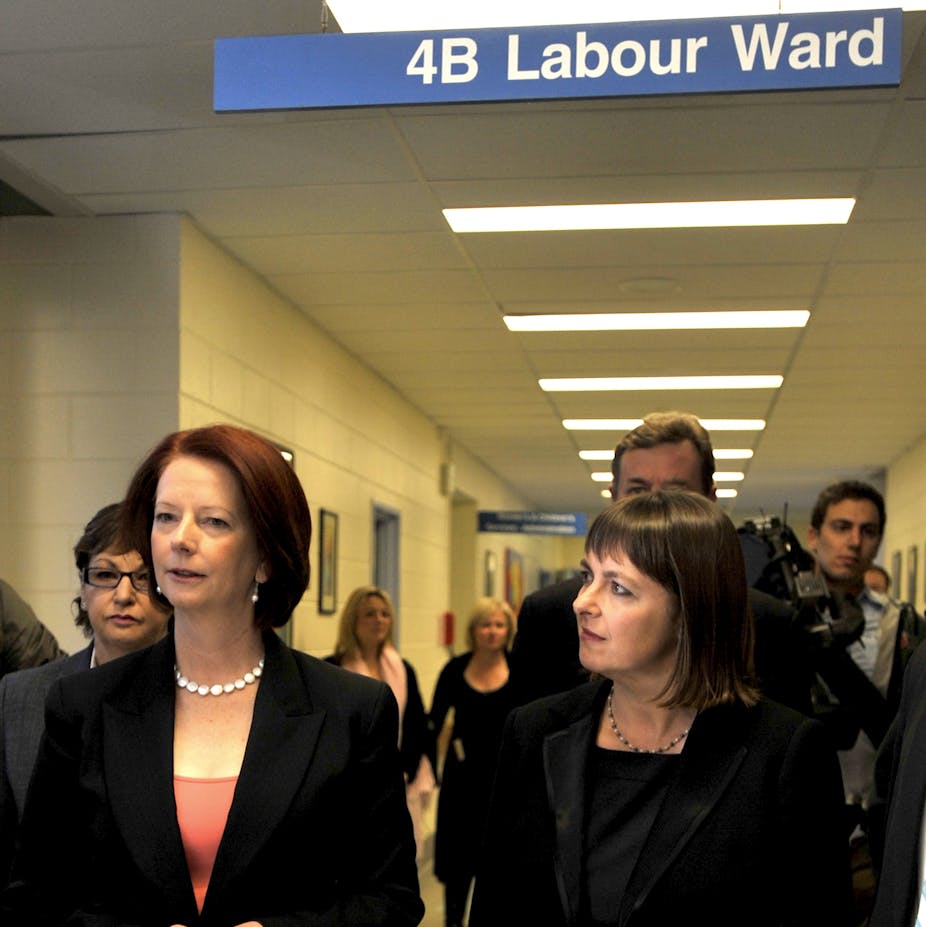Health Minister Nicola Roxon announced 38 new Medicare Locals last week, bringing the total eventual number of organisations to 62. But so few of us know what they are or what they will do.
For starters, you should know that you can’t get a beer at a Medicare Local. But don’t let this deter you from reading on – your future health may depend on these new health organisations.
Medicare Locals are a new regional primary health care structure. Most people turn off at this point, which is a pity because if they work well, these new organisations will help improve our primary health care and make it more relevant for an ageing population.
What are they and what do they do?
Medicare Locals are the primary health care flagship of the national health reforms. They are regional organisations whose job is to plan and coordinate improvements in primary health care for a designated population.
They are intended to support front line primary health-care services and providers – especially general practitioners and private allied health providers – to improve their services, fill gaps, coordinate care and make it easier for patients to negotiate the maze of services.
They’ll be funded to tackle particular problems – after hours primary medical care, primary mental health care – and build links with hospitals and with other community based services like Aboriginal health, local councils, self-help groups and other social care organisations, to improve community health.
They’ll replace the Divisions of General Practice and extend their focus from general practice to private allied health and non-government organisations, which have previously been left out in the cold. In some states they may also take on some community health services.
What can they do for the community?
Mrs Jones has diabetes and high blood pressure which she manages as well as she can, but it’s sometimes difficult to maintain the healthier lifestyle that she needs.
She can get Medicare funding to see a dietician and exercise physiologist, but there’s a shortage of services in her area and the co-payment is too high.
Her general practitioner doesn’t refer people with diabetes to the local health service diabetes clinic as he is afraid of losing patients.
The Medicare Local might help her GP link better with allied health providers, and try to attract more dieticians to work in the area.
It might help the GP employ a part-time diabetes educator in the practice, and negotiate better referral arrangements with the diabetes clinic.
This nuts and bolts service improvement can help people like Mrs Jones get the services they need to maintain stay healthy.
It is painstaking, unglamorous work and Medicare Locals will have few sticks and carrots to encourage providers to play along.
Much of their success will depend upon goodwill and a commitment to patient care.
Meanwhile, Mr Smith has heart disease and chronic obstructive pulmonary disease, which lands him in hospital from time to time. The hospital has an education program but he finds it difficult to get there.
And, his GP isn’t always informed when he has been hospitalised, or when his treatment has been changed.
His doctor knows that Mr Smith is lonely and needs social support, but doesn’t know how to access it.
A Medicare Local can help hospitals improve communication with GPs so that Mr Smith gets properly coordinated follow-up care.
It may provide an education program in the community and its links with social care services may help his GP refer him to social support programs.
Meanwhile, the kids from the local housing estate are getting into trouble. There is nothing much to do, and some of the older ones have left school without a job.
It’s not hard to see more serious health and social problems down the track.
A good Medicare Local will see this as a health as well as social problem and might work with councils, youth organisations, churches and schools to set up recreational programs and help some back into education.
So much for the vision. But will Mrs Jones, Mr Smith and the local kids get the help they need? This remains to be seen but we know that all will not be plain sailing.
Lurking dangers
Medicare Locals are part of a vision for a more integrated health-care system. Their strength will lie in their ability to bring together a wide group of health service providers to address the community’s health problems.
But their weaknesses are threefold:
Medicare Locals are not truly comprehensive. They won’t include community health (in some states) or hospitals, as did the Primary Care Trusts in England. So the system will remain fragmented. And although being separate may protect their budgets being raided by hospitals, they won’t be in a position to address the chronic imbalance between hospital and community care.
They will have limited resources and little authority to pull services into networks and fill service gaps. Health-care providers are notoriously prickly about their autonomy, and don’t take kindly to being told what to do. We could end up with plenty of action at the organisational level but less benefit for patients and communities.
Medicare Locals may find it hard to take a broad view of primary health care. They will need to think about social as well as medical care, and community as well as individual problems – all without alienating general practitioners who are a core part of primary health care. The Commonwealth, which is funding the whole enterprise, has little experience with broader primary health care.
Medicare Locals will provide opportunities for bold new action where the vision is there and the partnerships are right. They won’t be able to deal with the really entrenched problems of our health system.
If experience in New Zealand and the United Kingdom are any guide, this is likely to be the first step on a longer march to stronger and more comprehensive primary health care.

